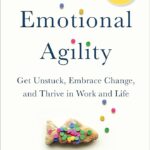The challenge for every successful leader is this: what got you promoted eventually has the potential to become a raging career liability. As Marshall Goldsmith famously said in his bestselling book of the same name: What got you here, won’t get you there and in the reality of today’s fast pace of business, what got you there, won’t keep you there either.
The people we work with are quick learners, highly coachable and great at what they do. And the problem for all these fabulous leaders is that what makes them great at what they do is also what makes them derail their careers in the wrong situation.
See yourself as a “big picture thinker”? You might sometimes ignore the practical realities.
Pride yourself on your ability to think quickly and innovate? You probably unintentionally cause chaos for those around you because all those ideas cloud out the priorities.
Are you known for your ability to be collaborative and work well with others? Maybe your career is being limited because you’re not seen as taking ‘decisive action.
One of the most dangerous career moves any of us can make is to rest on our laurels in our comfort zone. And the harsh reality for most leaders is this: the more senior you get, the less feedback you tend to get and worse, the more likely you are to minimize it (because after all, you’ve been successful to this point, so why mess with perfection?).
The Good, the Bad & the Ugly of 360 Assessments
So, how do you make sure you’re keeping your blind spots in check? The go-to approach for most organizations is the 360-feedback assessment: boss, peers and direct reports all weigh in on your leadership approach. A 360 assessment can be, for some, a humbling experience and, for many, a downright nightmare. I’ve spoken to enough senior HR leaders with the emotional scars that linger from 360 tools that created more dissent than development; and line leaders who meet the process with skepticism, fear and defensiveness.
Personally, I’m a huge proponent of 360 assessments. Leadership is so complex, expectations are constantly shifting and without regular re-calibration on the impact you’re having, you’re leading in the dark which puts you in danger of unintentionally derailing.
Here’s the thing… not all 360 assessments are created equal.
The effectiveness of 360 tools is all in the design of the tool itself and, from my perspective, how actionable it is. Self-insight is nice. Closing the “knowing-doing” gap is where the payoff lies from investing in these types of tools.
When it comes to coaching leaders who need to shift (often embedded) behaviour, our go-to tool has been MRG’s LEA 360 which assesses leaders against 22 key behaviours and 30 impact measures.
What I like the most is the developmental vs. evaluative nature of the LEA. It allows leaders to get a clear snapshot on how their behaviours are perceived by those around them and assess the impact of those behaviours against the needs of the organization, their role and the situation they find themselves leading in.
Shifting behaviours isn’t easy so a tool that makes behaviour change clear and actionable was a huge plus for the kind of coaching we specialize in.
As you consider a 360 tool for yourself or your organization, here are a few things to consider before leaping in:
- Assessment validity: There are lots of assessments out there; sadly, many are based on poorly researched foundations. Don’t be afraid to ask your assessment provider to show you their technical considerations and look for longevity not just how many people use their tool. Popularity isn’t a good measure of substance.
- Ability to tap into collective data: Some tools focus on individual development but don’t give you the ability to see broader trends across groups. This is a big miss. A solid leadership 360 should be able to provide you with data that you can use for culture change initiatives, succession planning, development and hiring purposes.
- Questionnaire design: Assessments that use the basic 1 through 7 ratings create what’s known as a “halos and horns” effect. As a rater, if I’ve had a bad experience with you recently, I may be inclined to give you a “drive by” punch by hitting you with some low ratings. Likewise, if you’re my boss, I may be inclined to inflate your feedback because I have fear that confidential feedback isn’t really confidential.
- Ability to action results: Assessments are great for giving people self-insight, but often individuals are left with the question “now what?” Make sure whatever tool you use provides the follow-up support needed to move from insight into action.
In today’s complex world of work, leaders who are able to draw from a wide range of behaviours and know how to minimize the downsides of their overused strengths will be better equipped to adapt to whatever new situation comes their way. And, I would like to suggest, will find leadership less frustrating and more rewarding in the process.
As a leader, don’t be afraid of 360 feedback assessments. Just be afraid of not getting them..
How We Help
At The Roundtable, we use the LEA 360TM to develop a deep understanding of an individual’s unique approach to leadership both from their own perspective and in the eyes of their colleagues. It measures 22 leadership behaviours and 30 leadership competencies and allows organizations to tap into data that supports succession planning, recruitment, culture change and development strategies to name a few.
We also leverage our proprietary CECI™ Goal Setting Process, where our clients can pinpoint the Big Bang for the Buck Behaviour (B4)TM that will be their ultimate career game-changer.
If you’re curious about how The Roundtable can help your organization help unleash the collective impact of your leadership initiatives, let’s start a conversation.




